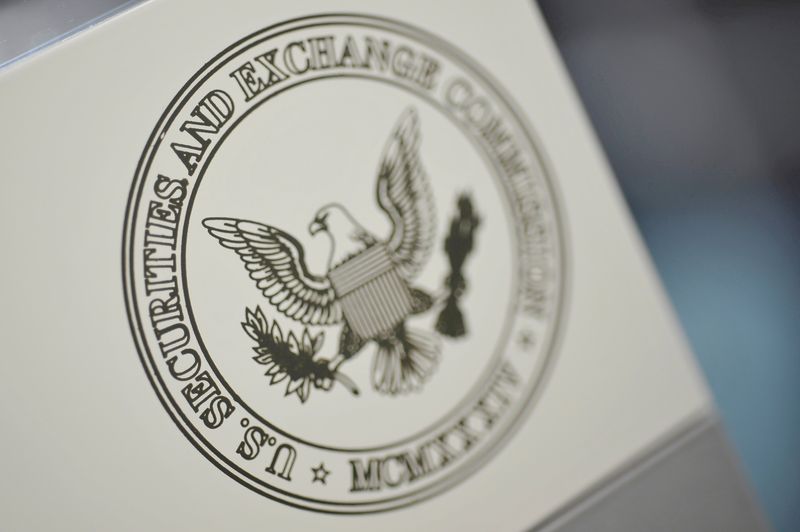
© Reuters. FILE PHOTO: The U.S. Securities and Exchange Commission logo adorns an office door at the SEC headquarters in Washington, United States, June 24, 2011. REUTERS/Jonathan Ernst
2/2
By Katanga Johnson and Chris Prentice
WASHINGTON (Reuters) -Wall Street’s regulator on Wednesday unveiled a draft new rule to enhance blank-check company investor disclosures and to strip them of a legal protection which critics say has allowed the shell companies to issue overly optimistic earnings projections.
The move by the U.S. Securities and Exchange Commission (SEC) is part of a broader crackdown on special purpose acquisition companies (SPACs) after a frenzy of deals in 2020 and early 2021 sparked concerns some investors are getting a raw deal.
Wall Street’s biggest gold rush of recent years, SPACs are shell companies that raise funds through a listing to acquire a private company and take it public, allowing the target to sidestep the stiffer regulatory scrutiny of a traditional initial public offering (IPO).
The SEC proposal, which is subject to public consultation, broadly aims to close that loophole by offering SPAC investors protections similar to those they would receive during the IPO process, the SEC said.
“Companies raising money from the public should provide full and fair disclosure at the time investors are making their crucial decisions to invest,” said SEC Chair Gary Gensler.
The rule would require SPACs to disclose more details about their sponsors, their compensation, conflicts of interest and share dilution.
It would also enhance disclosures about the target takeover, known as the “de-SPAC,” more information, including the sponsor’s view on whether the deal is fair to investors and whether the proposed transaction has been vetted by third parties. Such disclosures would have to be issued at least 20 days prior to any solicited votes on the acquisition.
The rule would also strip SPACs of a liability safe harbor for forward-looking statements, such as earnings projections.
The SEC has been stepping up oversight of SPACs amid worries of inadequate disclosures and lofty revenue projections, and other conflicts. Reuters reported last year that the SEC was considering new guidance to rein in SPACs’ growth projections.
SPAC sponsors say the projections are important for investors, especially when targets are unprofitable startups, but investor advocates say they are frequently wildly optimistic or misleading, but have been shielded by the legal safe harbor.
Wednesday’s rule, if finalized, would also broadly align the financial statement requirements of the target with those of traditional IPOs.
If SPACs do not meet certain conditions they may have to register as investment companies, subjecting them to a slew of other fiduciary rules. Those conditions include: maintaining assets in certain forms, entering into a deal with a target within 18 months of the SPAC IPO, closing the transaction within 24 months, and ensuring the newly-merged company is engaged primarily in the same business as the target was.
Gatekeepers who facilitate the deals, such as auditors, lawyers, and underwriters, should also be held responsible for their work before and after the SPAC listing, Gensler added.
The U.S. SPAC market experienced a wild ride in 2021, with an explosion in such deals during the first half of the year which quickly cooled off in the second half of the year.
All told, 604 SPACs raised $144 billion in 2021, according to data from Renaissance Capital.


Be the first to comment